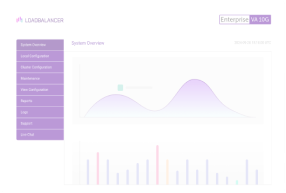Load balancing JBoss Application Server
Benefits of load balancing JBoss Application Server
Load balancing is essential when running JBoss in a cluster, which involves distributing incoming client requests across multiple application server instances:
- High Availability (HA) and fault tolerance: Load balancing provides High Availability by eliminating the Single Point of Failure (SPOF). The load balancer continuously monitors the health of all JBoss server instances. If one server fails, becomes unresponsive, or is taken down for maintenance, the load balancer automatically detects the issue and immediately redirects all new and existing client requests (with sticky sessions/session replication configured) to the remaining healthy servers. This ensures uninterrupted service for users. Server instances can be taken offline gracefully for patching, upgrades, or configuration changes without impacting the overall application availability.
- Scalability and elasticity: Load balancing allows your application to handle a growing or fluctuating user base and traffic spikes effortlessly, achieving horizontal scalability. It distributes the load evenly across all available JBoss servers, preventing any single instance from becoming overwhelmed. As demand increases, new JBoss server instances can be added to the cluster and automatically integrated into the load balancer’s pool. Conversely, under low load, instances can be removed, optimizing resource utilization and cost.
- Improved performance and response time: By distributing the workload, load balancing ensures that all requests are processed quickly, leading to a better user experience. Requests are routed to the server that is least busy or most capable (depending on the load balancing algorithm), preventing performance bottlenecks that occur when one server is overloaded. By spreading the processing burden, the individual servers are less stressed, which results in faster response times and lower network latency for clients.
About JBoss Applications Server
The JBoss Applications Server is a J2EE platform for developing and deploying enterprise Java applications, Web applications and services, and portals. J2EE allows the use of standardized modular components and enables the Java platform to handle many aspects of programming automatically. A beta version of JEMS is now available on Amazon’s cloud service EC2.
Red Hat JEMS is available through subscriptions that include certified software, expert support, updates and patches. The JBoss application server is also available through JBoss.org, a community that provides free support for the server. JBoss is licensed under the GNU Lesser General Public License (LGPL).
Why Loadbalancer.org for JBoss Application Server?
Loadbalancer’s intuitive Enterprise Application Delivery Controller (ADC) is designed to save time and money with a clever, not complex, WebUI.
Easily configure, deploy, manage, and maintain our Enterprise load balancer, reducing complexity and the risk of human error. For a difference you can see in just minutes.
And with WAF and GSLB included straight out-of-the-box, there’s no hidden costs, so the prices you see on our website are fully transparent.
More on what’s possible with Loadbalancer.org.

















